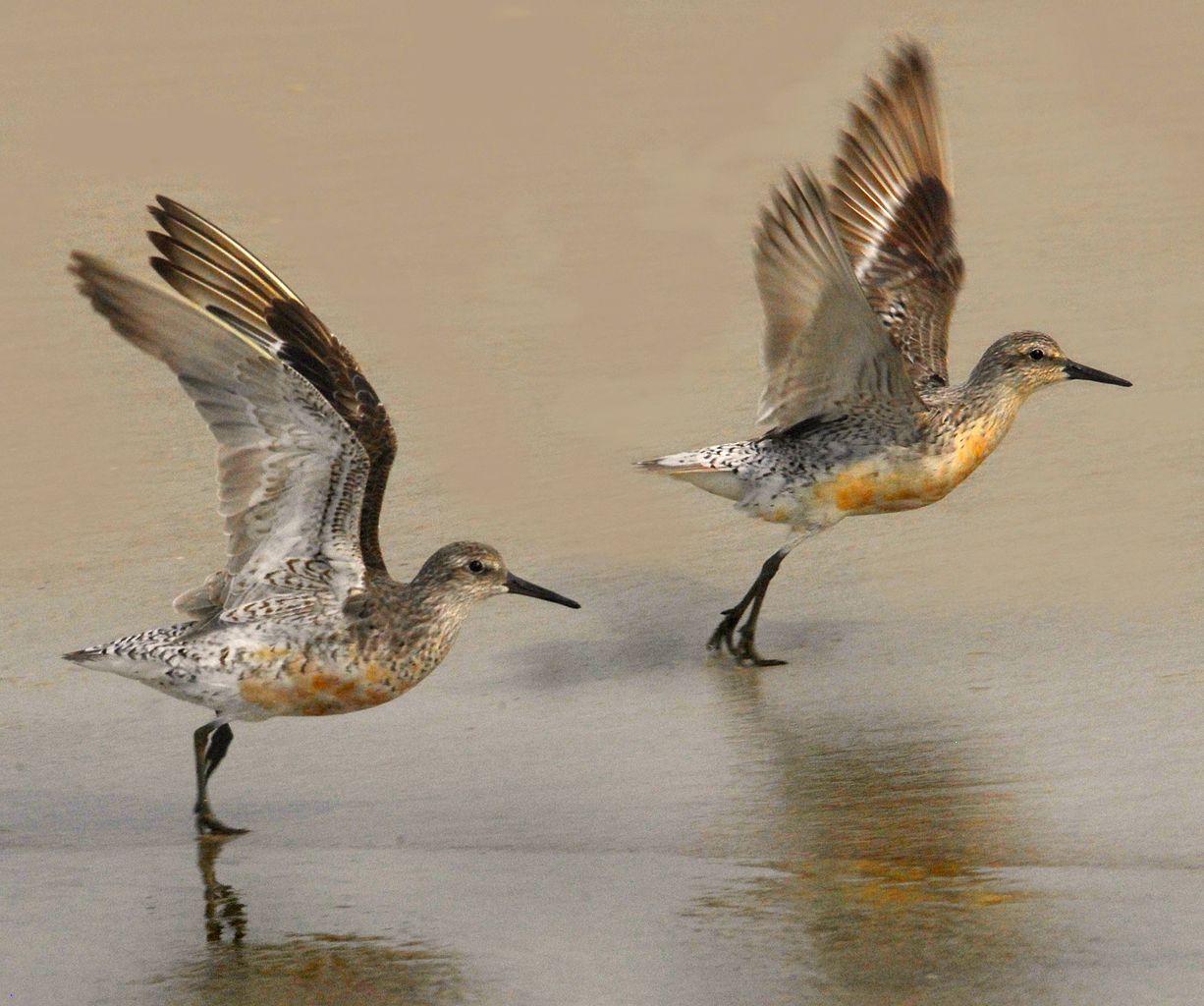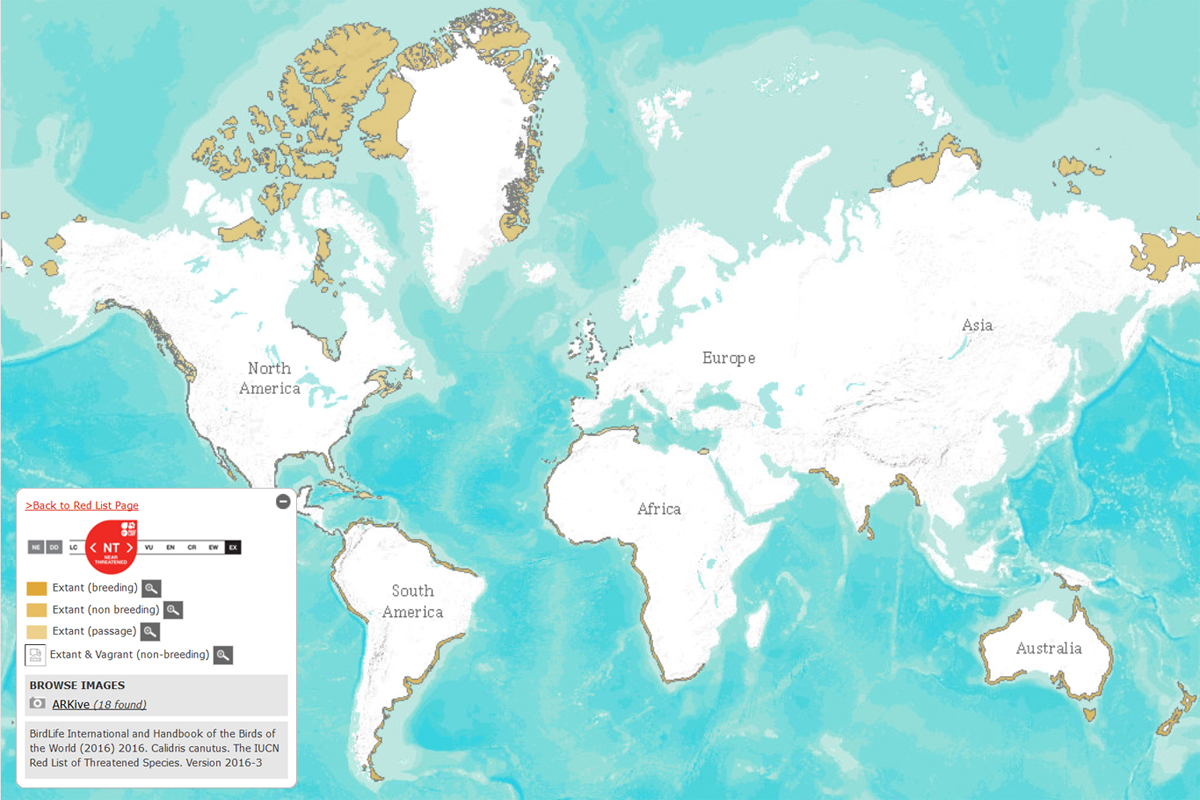You are here
Red Knot

Creative Commons photo by Andrea Westmoreland
Very little distinguishes the Red Knot from other migratory shorebirds. Only a practiced bird watcher would be able to pick this plump, average-sized bird out of a line-up. Still, the Red Knot has captured public interest the world over as a prime indicator of all Arctic shorebirds.
Unlike other shorebirds, the Red Knot makes a harrowing 14,000 kilometre journey along the Atlantic flyway from South America and along the East Asian-Australasian Flyway all the way up to the Arctic Circle for breeding. This exhausting trip requires several stops along the shores of the Yellow Sea and the Atlantic coast. These stops are vital for the species’ survival.
Recent reclamation on the Yellow Sea along with an increase in Atlantic horseshoe crab fishing, whose eggs the birds feed on during migration, have led to widespread habitat loss—the Red Knot’s biggest threat. The rapid population decline has placed the Red Knot at near-threatened, according to the IUCN Red List.
Scientific Name
- Calidris canutus
Quick Facts
- Found along all major flyways.
- Arctic migrant.
- Migrate in larger flocks than other shorebirds and stop at the same locations every year.
- 80% decline in Americas
IUCN Red List Status
Main Threats
- Loss of Habitat from land reclamation
- Overfishing of prey
- Climate Change
Flyways

Map courtesy of IUCN, BirdLife International and the Handbook of Birds of the World 2016
